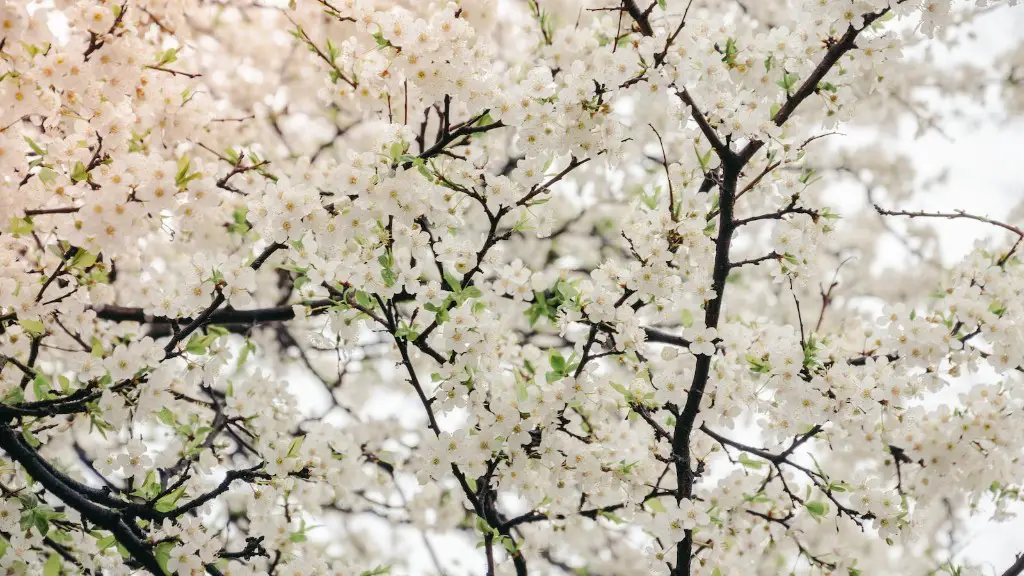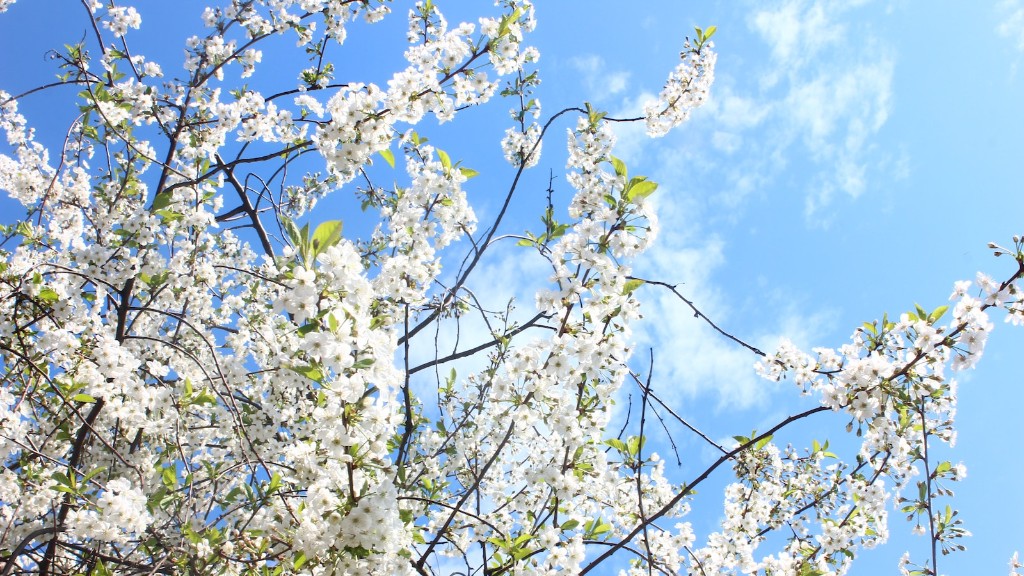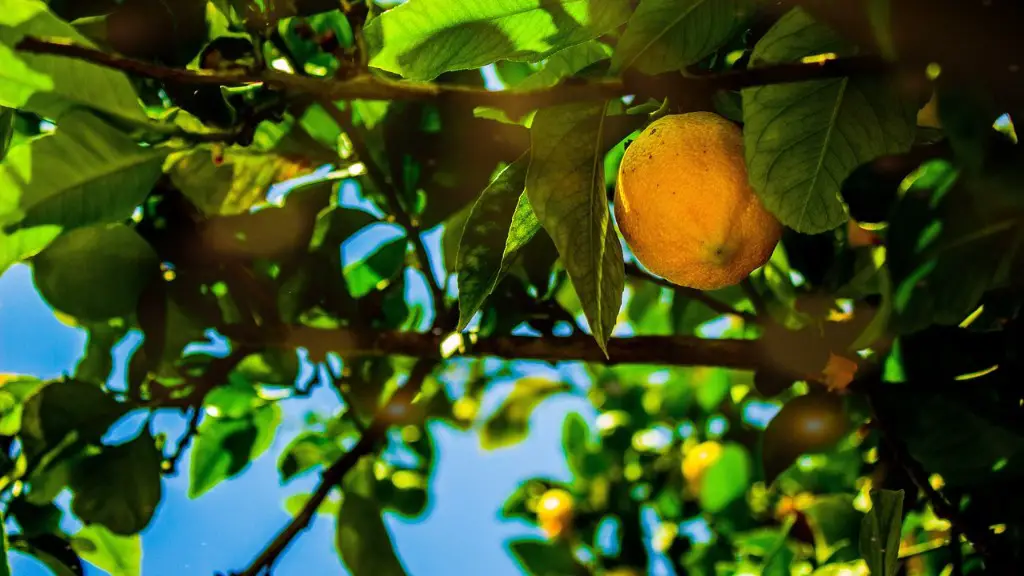Introduction
Pruning a cherry tree is an important part of tree care, as it can help promote healthy growth, reduce pests and diseases, and increase fruit production. Different cherry tree varieties have specific pruning requirements as they respond differently to pruning. It is important to identify the type of cherry tree, as when the best time to prune will depend on the species. Pruning should be done in such a way that helps promote better air flow and pockets of light, while avoiding any over-pruning or damage to the tree.
Identifying the Cherry Tree Variety
Cherry trees can generally be divided into two groups, with varieties that need to be pruned during the winter months and those that need to be pruned during the summer. Pruning a cherry tree at the wrong time of the year can damage or even kill the tree. It is essential to identify the type of cherry tree for successful pruning. Common cherry tree varieties include the Japanese Cherry and the Ornamental Cherry, both of which are winter-pruned varieties.
Preparing for Pruning
Once the variety of cherry tree is identified, preparations should be made before pruning. This includes gathering the necessary tools such as pruning shears, loppers, and saws. It is important to wear protective gloves when pruning to avoid cuts or injuries. Additionally, it is beneficial to have a plan in place to know which branches need to be removed, so it is advised to examine each branch before any pruning begins. On certain varieties of cherry tree, it is recommended to mark any branches planned for removal with removable paint.
Winter Pruning
Winter is the best time to prune winter Pruning is beneficial as it encourages growth of fruits and flowers, while keeping the trees a manageable size. It is important to begin pruning when the trees are at a rest period, typically late fall or early winter. During this time of the year, the tree is cold and dormant, allowing pruning to be done with minimal damage. Pruning should begin with the removal of any dead, diseased, or damaged wood, as well as removing any crossed branches or branches that are rubbing against one another. Once this is done, the remaining branches should be thinned out and pruned to the desired shape. It is important to not prune too rigorously or too heavily, as this can lead to imbalance and can make the tree vulnerable to pests and diseases.
Summer Pruning
Summer pruning is the best time for most ornamental cherries, even though there are some exceptions. Summer pruning should be done to remove any crossing branches, rubbing branches, suckers, deadwood, or diseased or weak branches. While some light pruning of cherry trees can be done during summer, it is generally not advised to trim the main branches, as this can disrupt the flowering and fruit-setting of the tree. It is also important to avoid heavy pruning in the late summer months, as this can reduce the tree’s ability to store energy, leading to weaker growth in the following season.
Tools
When pruning, it is important to have the right tools. Pruning shears are the most common tool used, as they are ideal for trimming small branches and twigs. Loppers are useful for cutting thick branches, and saws can be used for thicker branches. Additionally, a pruning saw is helpful for removing large branches and is a valuable tool for pruning cherry trees.
Preventative Care
In addition to regular pruning, preventative care is important for cherry trees. Keeping the branches and foliage of cherry trees healthy is essential for healthy growth. This means providing adequate water, fertilizer, and controlling pests and diseases. It is also important to keep the tree well-ventilated, as poor air circulation can promote the growth of pests and diseases. Additionally, it is beneficial to mulch around the base of the tree to insulate the roots and stave off weeds.
Disease Management
When it comes to pruning and caring for cherry trees, it is important to watch out for signs of disease. Pruning early in the season can help to minimize the risk of diseases spreading, as pathogens have less opportunity to spread during colder temperatures. Additionally, it is important to inspect the branch tips and trunk of a cherry tree for signs of diseases and pests, such as fungi, cankers, and borers. In the event that any signs of pests or diseases are found, it is important to contact an arborist for professional advice to effectively manage the issue.
Protection from Winter Damage
During the winter months, it is important to protect a cherry tree from the cold and frost. During this time of the year, the trees need extra protection to remain healthy, such as additional mulching and frost protection sprays. It is also beneficial to wrap the exposed trunk of a cherry tree with burlap during the colder months to protect the bark from frost and cold weather.
Support and Training
Cherry trees have a tendency to become leggy or have problems with a lack of balance. To help promote healthy growth and fruiting, cherry trees may need support and training. Structural pruning is useful for providing a sturdy and healthy tree structure, while lateral pruning can be used to help spread out the cherry’s growth. Training cherry trees to a single leader and to create an open vase structure is essential for strong and healthy trees.
Summer Maintenance
Summer is the time of the year when cherry trees need the most attention. During the hotter months, it is important to ensure that the tree is getting adequate water and fertilizer. This is especially important if the tree is young or is fruiting heavily. Additionally, it is important to inspect the tree for signs of pests or diseases and to remove any dead or damaged branches.
Fertilization
Fertilization is important for cherry trees to remain healthy, as it helps to replenish nutrients in the soil. Generally, it is best to fertilize a cherry tree in the early spring and then again after fruiting. Additionally, adding organic matter to the soil at the base of the cherry tree is beneficial for retaining moisture and providing necessary nutrients.
Encouraging Flowering and Fruiting
When it comes to cherry trees, pruning is an essential step for promoting healthy flowering and fruiting. Pruning helps to stimulate growth for the next season and removes any diseased, dead, or damaged branches. It is important to remove any crossed or overly dense branches, as these can reduce the amount of light and circulation to the tree. Pruning should always be done carefully and with the goal of promoting healthy growth.



